How to Race for Fun – A slightly different guide to racing
With the racing season in full swing and riders travelling from race to race, you, too, might be itching to race. Whether you’re an experienced racer or still waiting to enter your first event, this guide is for you and should get you amped to get out there and compete! So, let’s get into it!
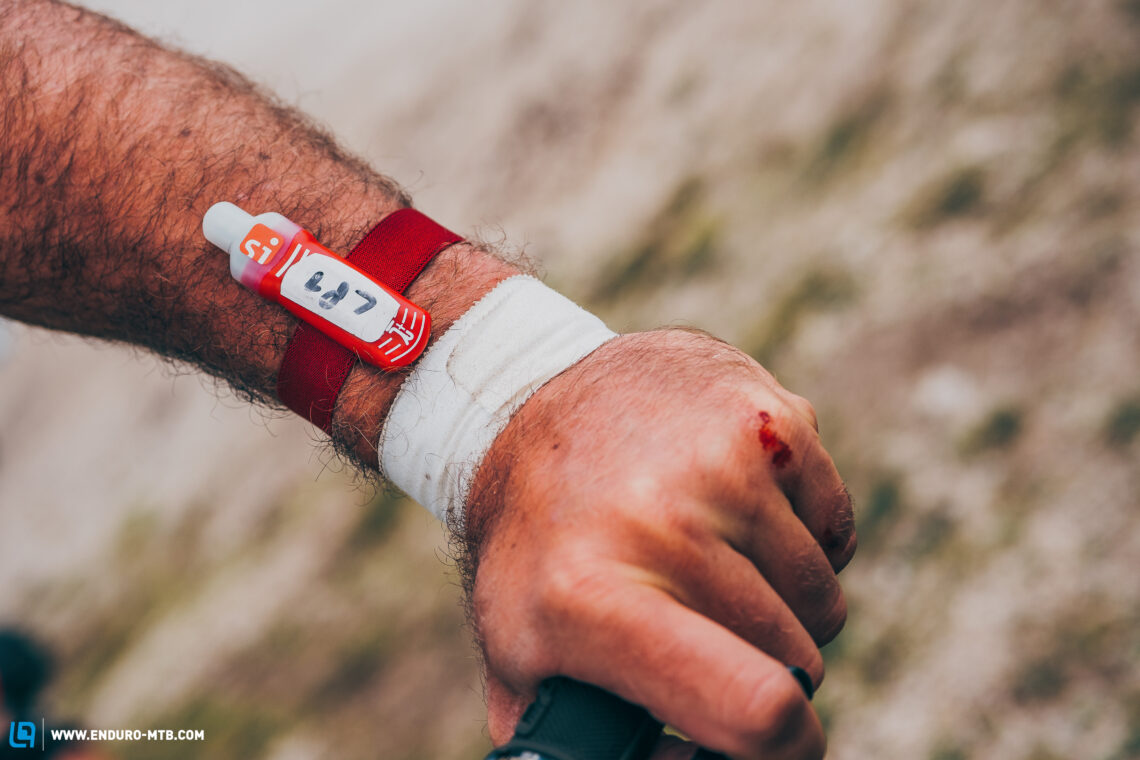
Beep, beep, beeeep… This sound in the start hut is enough to make the palms of even the most experienced racers a little sweaty. It’s a very special mixture of focus, nervousness, fun, excitement and pressure that you can only get from racing. Regardless of whether you’ve already got goosebumps just thinking about your last race or you’ve still got a lot of question marks floating around your head: You’ve come to the right place! We want to introduce you to the world of racing, show you what’s so special about it and get you as excited as us about entering the next race. After having celebrated the good old times with the MAG41 Racing Revival, we want to get you fired up about entering your next or maybe even your first race with our slightly different guide to enduro racing.
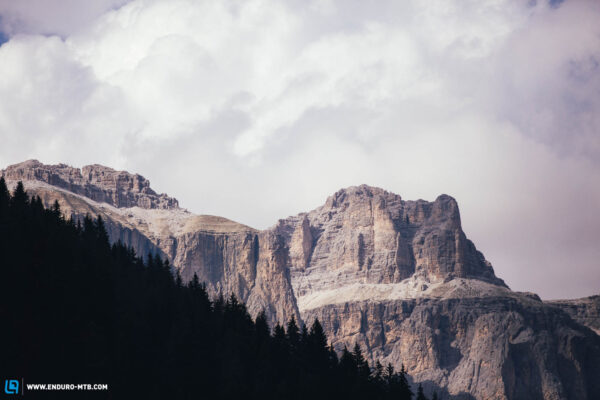
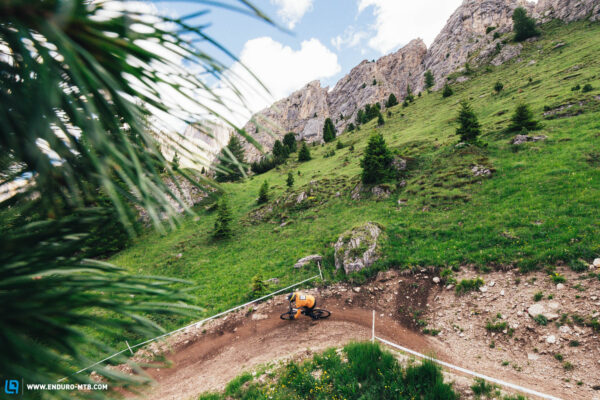
But don’t worry, we’re not out to condemn you to counting your oatmeal with strict nutrition plans or locking yourself up in the basement on the bike trainer! We’ll take you by the hand and show you what a race weekend is really all about. We’ve already made all the mistakes for you, so that you can do it better the first time around. Peppered with a good dose of fun and not taking things too seriously, this is the guide to a fun and stress-free race weekend.
Why racing is fun
Our individual motivations behind racing could hardly be more different. For some, it’s about leaving their comfort zone and pushing themselves, while others just want to spend a weekend riding their bike with good friends. With enduro racing, you can do both. In contrast to downhill races – where you only have a few runs over an entire weekend – you ride your bike a lot more at enduro races. But it’s not just the time spent on the bike that makes enduro racing so much fun, but also the fact that you can spend the whole day with your friends. All the behind the scenes gossip included.


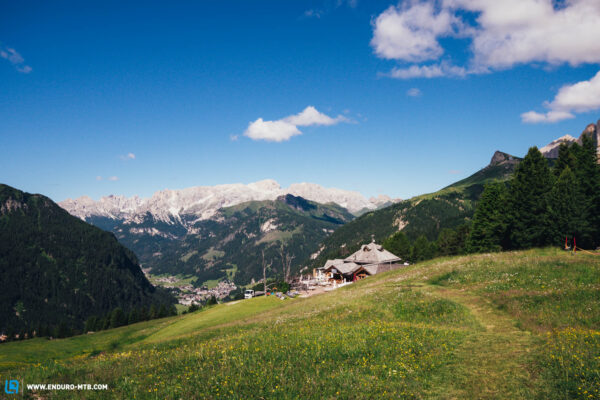
Pre-race
Setting the right goals
As fun as racing is, having the wrong mindset can make your life a lot more difficult. It’s important to remain realistic and not set your sights too high. Stay relaxed and don’t be too hard on yourself. There’s nothing wrong with having a goal for a race weekend per se, and it can certainly help you push yourself a little harder. But from our experience, it makes little sense picturing yourself getting on the podium or anything like that. Depending on which category you’re competing in, it’s unrealistic to place first anyway, though coming in dead last is just as unlikely unless you suffer a mechanical defect on your bike. We suggest aiming to finish amongst the top 50% of your category or compete with your friends if you know that you’re on a similar level. Because having proof on black and white that you’re faster than your friends after a race weekend is worth more than any podium placement. However, the number one goal should always be to have fun and get home injury-free. Since none of us earn our living from racing, it’s not worth taking unnecessary risks – you’ve got to get back to work on Monday to put bread on the table, after all.
Choosing the right race
If we’ve got you all fired up and eager to enter your first or next race, the next step is choosing which race to attend. Racing series and events have shot up everywhere in recent years and while that’s ensured that there’s something for everyone, it can be a little hard to keep track of what’s what. Most races are part of a larger racing series, but it’s usually possible to compete in a few or just one, or race in a series. When choosing the right race, you’ve got to be able to make a realistic self-assessment of your skill-level. The racing series don’t just differ in their locations, entry fee or format but, above all, in their level. It might be better to start off with more relaxed races and gradually move up the ranks as you get more comfortable. And who knows, maybe one day you’ll be standing next to Richie Rude in the start hut of an EWS.
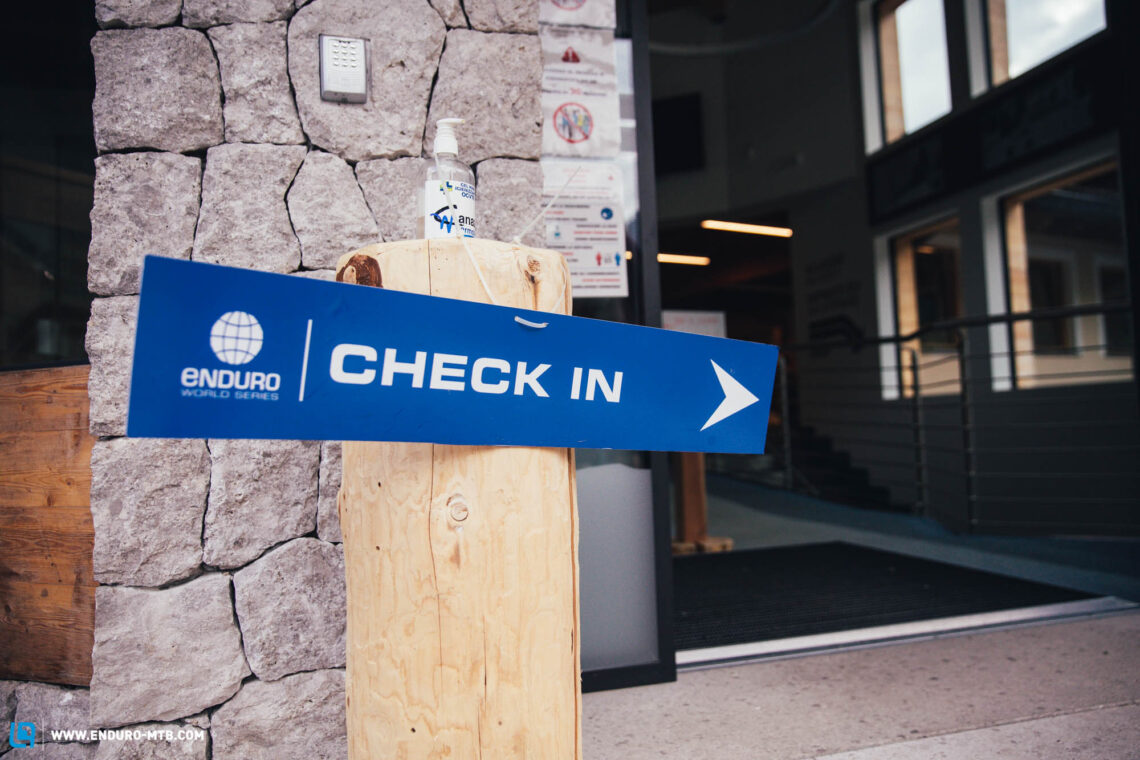
In addition to classic enduro races, you’ll also find formats where you can compete in tandem or a team. From our experience, these can be loads of fun and you can push each other to new heights. If you want to do something crazy or if you’re looking for adventure, you can also try out one of the legendary mass start or multi-day races. We’ve taken it upon ourselves to put together a small overview of the most important racing series and events for you here, so that you do not have to go scrolling through countless websites and event details trying to find something that’s suitable for you:
Entry-level series
Classic entry-level series offer an excellent way to dip your toes in or even a return to enduro racing. The elevation profile isn’t too crazy and there’s a bigger focus on having fun. In fact, the whole atmosphere around the weekend is very laid back. The entry fee isn’t too expensive either, as entry-level series are generally cheaper to organise than the bigger, higher-profile races. Most of the climbing, usually between 800 and 1200 m, must be done under your own steam and thus the descents are also kept within limits. As a result, entry-level series don’t require you to be super fit and can even be done if you’re hung over from the day before (you can guess what goes on in the pits). However, just because you don’t have to be fit to ride them doesn’t mean the trails aren’t any good. You’ll find there are some real treats waiting for you. If you’re in Germany, the Enduro One series is particularly worth mentioning here, with several stops in Germany’s lower mountain ranges. If you’re in the mood for bigger European mountains, check out the Enduro Tirol series.
Mid-level series
If you’ve mastered the entry-level series and want to take the next step or simply think you’re already fit and skilled enough to jump straight into the deeper end, the mid-level series might be the right choice for you! With these, you’ll occasionally be using a shuttle to get to the top, as the stages are longer and will have your hands cramping up towards the bottom. The trails can also be a lot more technically demanding. Many of the races are held in beautiful regions and towns such as the Reschenpass, Laax, Lenzerheide or the Vosges. Since the races are a lot bigger and often include lift passes, their entry fees are also slightly higher. If this sounds like your cup of tea, take a look at the Swiss Enduro Series, the BC Enduro Tour or the 3-Country Enduro, to name a few European options.
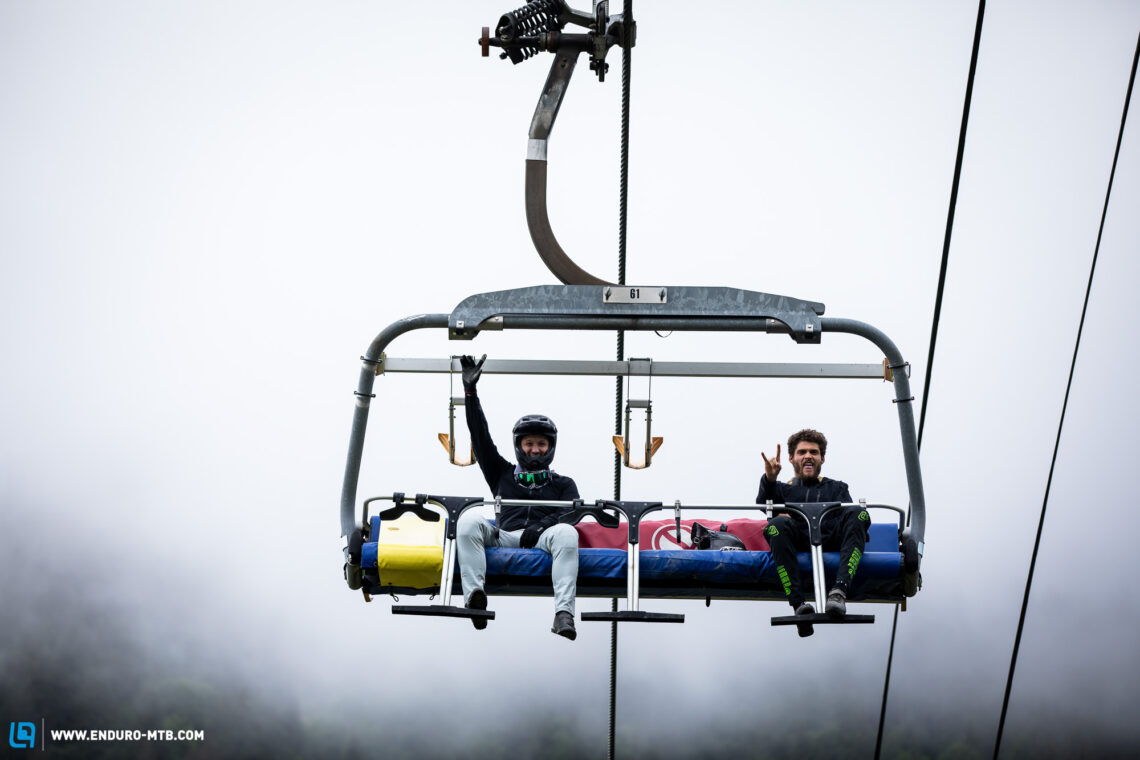
Pro series
This is where shit gets real! If you want to try your luck on the same stages as the pros, you live for 10-minute descents, and you’ve got nerves of steel, then listen up: Pro series, such as the Enduro World Series (EWS), are best reserved for advanced riders. You should definitely have some racing experience under your belt and be fit enough if you want to walk away from a pro race weekend unscathed. Besides the pro classes, for which you must qualify at designated qualifier events, you can also enter the open EWS100 and EWS80 classes. Once you’ve proven yourself here, you’ll have earned respect on your local trails! Matching the steep trails are the steep entry fees of up to 250 euros.
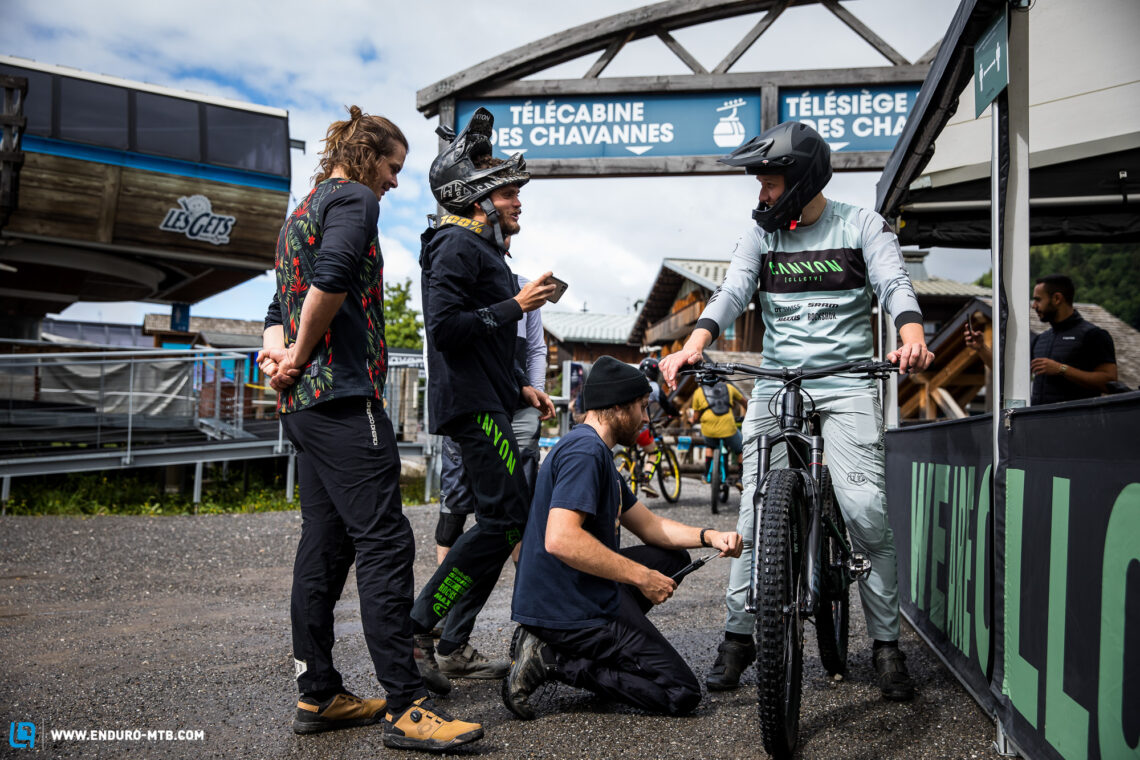
Multi-day races
If you’re looking for something a little more adventurous, just want to escape the daily grind, and combine it with the thrill of a race, then pack your bags for a multi-day event. Whether Madeira, the Azores, Provence or the Cascades, you’re guaranteed to have an adventure and experience epic days on the bike at multi-day races. Since the trails can get very demanding and a whole week of racing is absolutely exhausting, you’ll do well with a certain level of skills, fitness and perseverance. These races usually consist of complete, all-inclusive packages with meals, accommodation, luggage transport and everything else. As such, this kind of race doesn’t come cheap. However, what you get in return is unforgettable memories and once-in-a-lifetime adventure.
Mass start races
This is where things get crazy! Have you ever thought about blasting down a ski slope together with several hundred riders as you battle each other down an hour-long descent, and then just collapsing after crossing the finish line? No? Neither have we! There’s several of these mass start races that take place every year. Without a doubt, the most famous of these is the MEGAVALANCHE in France. Besides being slightly mad, you’ll need arms of steel and the lungs of a horse if you want to make it to the bottom.
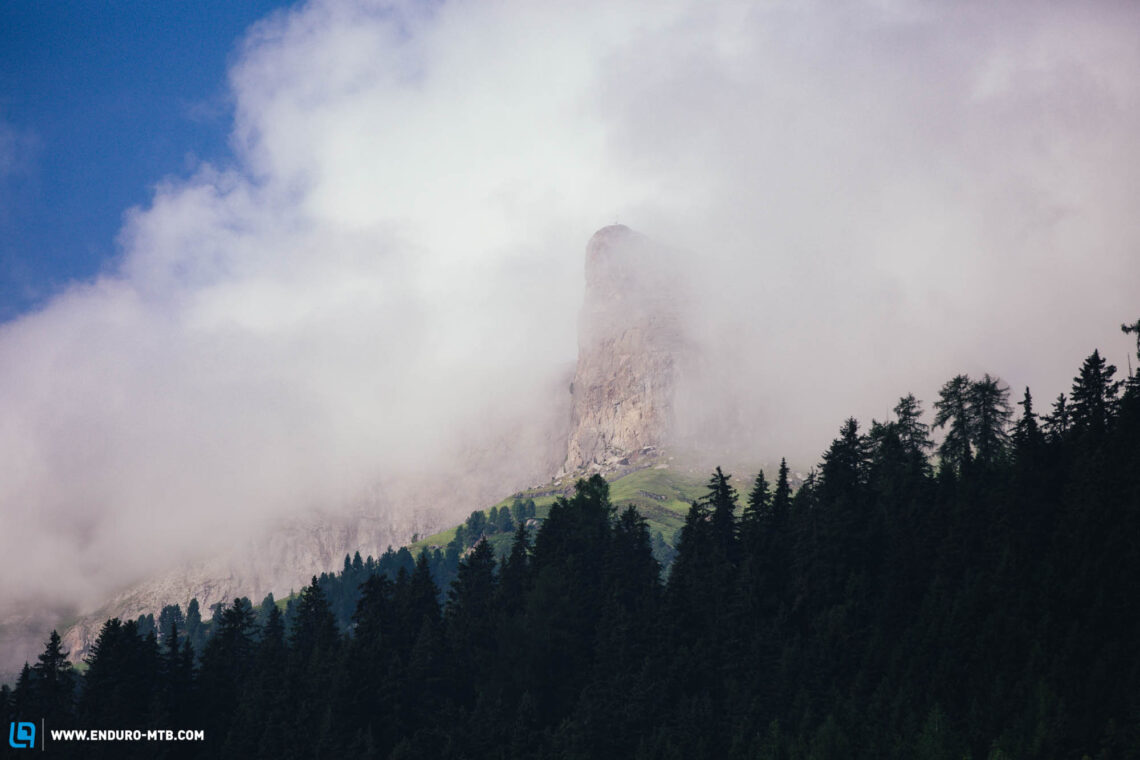


If any of the above racing series or events appeal to you, you’ll also want to choose the most suitable location. If you’re just starting out, we recommend entering events that are hosted in locations or conditions that you’re familiar and comfortable with. If you typically ride in the lower mountain ranges, then we recommend starting out with a race in those kinds of mountains, where you’re likely to encounter familiar conditions. Do you spend your holidays in the Alps and know the local trails like the back of your hand? Well, then you might as well try racing there. In addition to the demands of the trails, an unfamiliar region itself can also be quite stressful. Simply knowing where you can get a good pizza or which supermarket has the most reliable supply of post-ride beers can do a world of good. Nothing is more annoying than going hungry and thirsty in the pits after a hard day’s training or racing, but more on that later.
The right bike for the job
Bikes have become more versatile than ever, but not every bike is suitable for every race. Even if modern trail bikes are typically capable enough to take on an enduro race, we would still advise going for a thoroughbred enduro bike instead. While you may do quite well on your trail bike at entry-level races in the lower mountain ranges, the harder and longer stages of more demanding races will shake you up if you don’t have the appropriate bike. Enduro bikes will give you more confidence and make sure that you can still grip the handlebar towards the end of the stages. Of course, long-travel freeride bikes will do the same, though you should ask yourself whether the race you’ve entered has got any long and tiring transfers. Generally speaking, you should always use a bike that you’re familiar with and that you feel comfortable riding. When things get technical or you’re pushing your limits, you’ll feel more confident riding a bike that you know and you’re less likely to get thrown off by unexpected manoeuvres.

Tuning the bike
The bike’s durability is the number one priority – you’ll want to avoid breakdowns at (almost) any cost, starting with the tires. We swapped the standard MAXXIS tires and their relatively thin EXO+ casing on our Canyon Strive for the significantly more puncture-proof Michelin Wild Enduro Race Line models. You don’t want to save on the weight or rubber compound of the tires because no amount of rolling resistance in the world will cost you as much time in a race as a flat tire. While we were at it, we also fitted tire inserts. The inserts don’t just protect the rims and tires, but also allow you to run lower tire pressures, giving you more grip and damping. In addition, they also let you keep on rolling relatively well, even when you’ve got a flat tire, so you can make it across the finish line and then fix the puncture. We also replaced the grips with thicker and softer models for added comfort and cushioning on long stages. The contact points are a very subjective matter – everyone’s got different preferences – but you’ll want to focus on maximum comfort for races with long stages.
In our case, there was no further tuning to be done on the Canyon Strive CFR, as the bike is designed and built with racing in mind. If your bike doesn’t have a chain guide, we would wholeheartedly recommend fitting one to make sure that the chain stays where it belongs. While modern drivetrains work quite well without chain guides, it’s never a bad idea to be extra sure for a race and avoid dropping the chain at all costs. In the worst case, it could get wrapped around the rear wheel and tear off your derailleur.
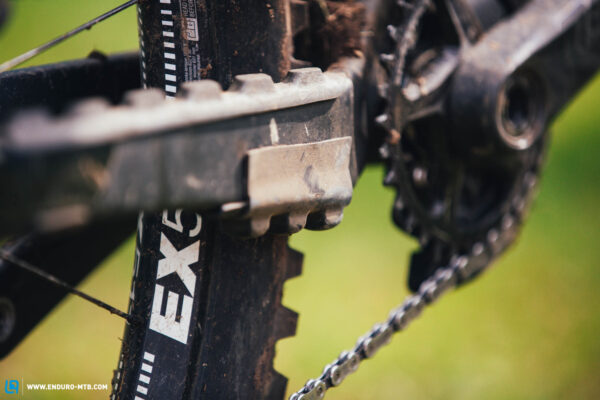
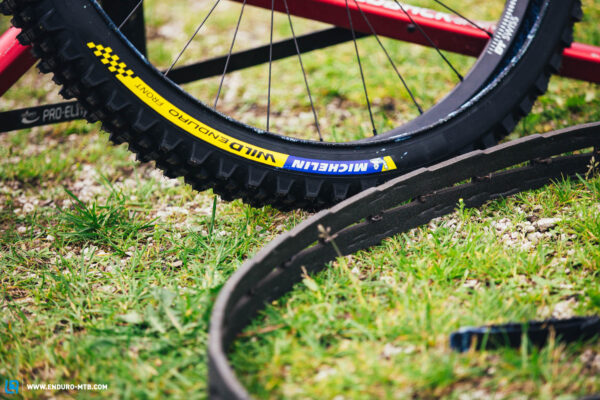
Once you’ve tuned your bike enough that you feel confident it will get through a race weekend without too much trouble, then the final step is to check your components for wear and tear and replace or service them if necessary. If your brakes need bleeding, pads are worn out, or if your bike has been making strange creaking noises for weeks, then it’s best to fix issues like these before the race. You can only perform at your best when you’ve got confidence in your bike. Also, no one likes a bike that rattles like a sack full of crockery. A quiet bike is a fast bike. It’s generally true that the sooner you get everything done, the better! Fitting new tires on the morning of the race adds unnecessary stress, especially when you can’t get the tire inflated – we’re talking from experience here…
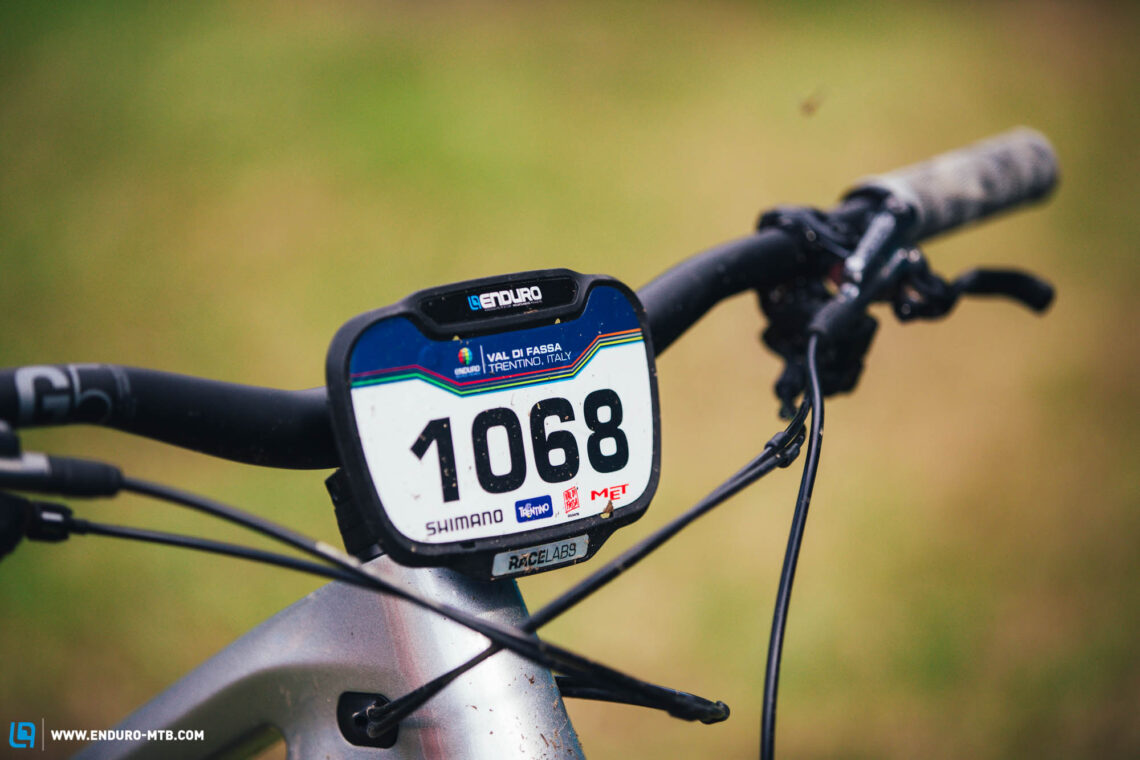
Essentials to carry on the bike
No matter how well you’ve tuned your bike, defects can always happen. That’s why it’s so important to be prepared for all eventualities. This includes having tools and spare parts such as tires, a rear derailleur and brake pads ready for you in the pits. We’ll also show you what else we took along with us on the bike in Canazei for emergency trail-side repairs. Small spoiler: it was a lot! Since we find backpacks or hip bags rather annoying when racing, we prefer attaching all our tools and spares to the bike. We’ve previously covered the various solutions available to attach things to your bike. This is what we took:
- Derailleur hanger (under the saddle)
- Chain link (on the shifter cable)
- Tool bag from Canyon
- Tubeless repair kit with plugs
- Tire levers
- Multitool
- Cable ties
- Velcro strap
- Shifter cable
- CO2 cartridges
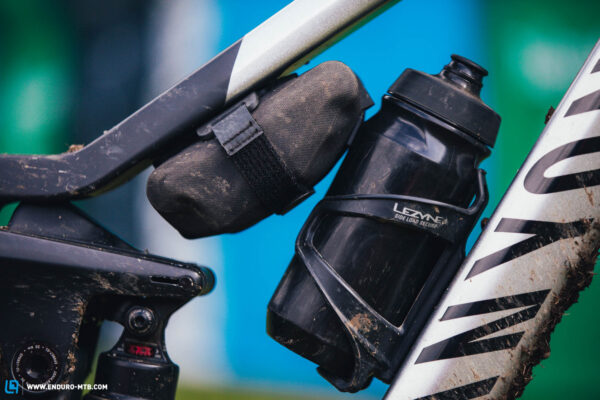
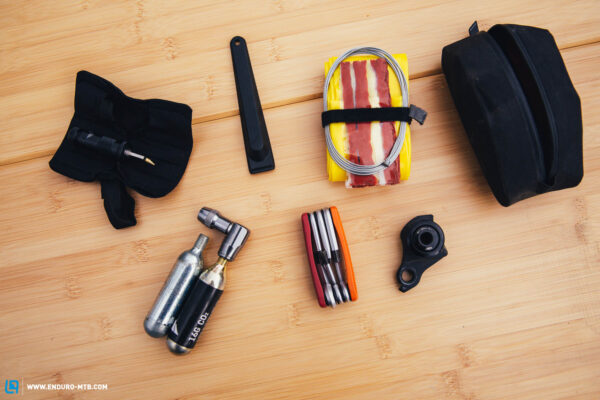
It’s usually not the end of the world if you haven’t got all the tools – what are friends for? There’s always someone that thinks of everything, unless everyone assumes so…
When your bike is ready and you’ve got all your tools, spares, etc. attached, you should definitely take it for a test ride! You’ll often find that some things rattle or come loose, especially if you’ve got a lot of stuff strapped to the bike. Trial and error are key here!
Preparing for the race
Now we get to our 76-week enduro training plan, which consists entirely of spinning on an indoor trainer and weightlifting… If the thought of that made you die a little on the inside, don’t worry. As promised above, we’re not out to lock you in the basement on the bike trainer just yet. You already know that different levels of racing require different levels of fitness. In most cases, however, there’s no special training plan necessary and we didn’t start frantically pumping iron before the EWS100 either.

We recommend that you do some research before the race to find out what the elevation profile was like on past or similar events. You’ll often find that sort of information on the organiser’s website, or you can play Nancy Drew on Strava or Trailforks. If you know what to expect, you can try to ride a similar route on the weekends before the race to see how well you’re able to cope with that much riding. Don’t worry about the transfers, those shouldn’t be a problem, it’s the descents where your fitness matters. It’s on the descents that you’re racing against the clock, and there’s no stopping to catch your breath or relax your arms, so they’re a lot harder than the chill laps you’re used to on your home trails. With that in mind, getting ready for a race weekend usually does require some training, and you can expect to put in the work on the days leading up to it.
During the race
The accommodation
So, your bike is prepped and raring to go, you’re in top form thanks to our strict fitness and nutrition plan, and the race weekend nears. Before packing your things and setting off, however, you’ve got to think about where you’ll spend the night. Traditionally, riders like camping in the race pits. This option is usually free or very cheap and it’s typically where the action is at. If you’re travelling with a big group of friends, it’ll certainly be a fun camping weekend if nothing else.
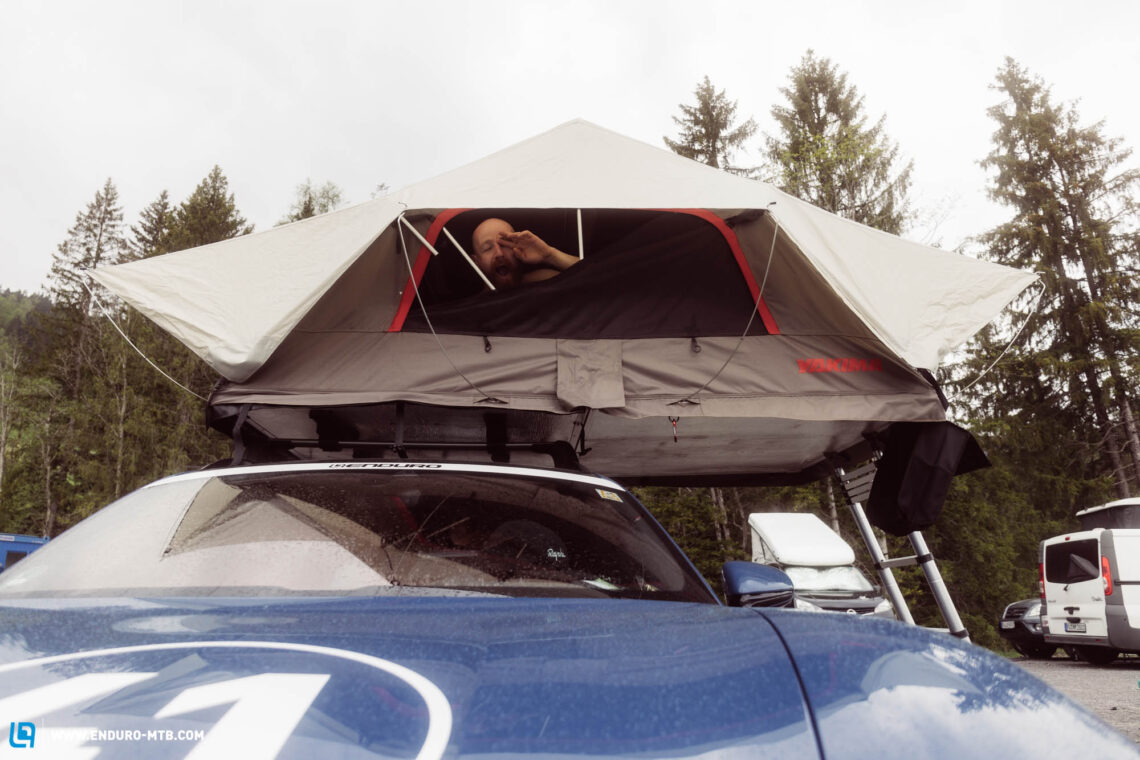
Even if the big fan parade takes place in the pits and there’s fancy setups all around, you don’t have to hide just because you’ve got a small tent. It’s the spirit that counts! That’s what the race pits are all about. In the evenings, you’ll hear riders exchanging anecdotes about the fail or save of the day, helping each other wherever they can and somehow, you’ll always end up with a beer in your hand. And let’s be honest, nothing beats having a beer in the shower of a public swimming pool after a 10-hour day on the bike!
But beware, you won’t find a race pit at every event and the capacity is often limited. We recommend finding out from the organiser beforehand. If you prefer things a little quieter or more relaxing, you might want to consider staying in a hotel or B&B. Of course, you’ll pay more, but you get a good night’s sleep and a hot shower. As always, book early, especially if it’s a big race or in peak season.
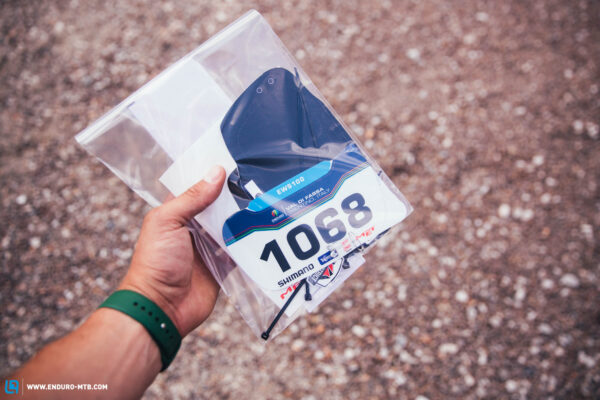
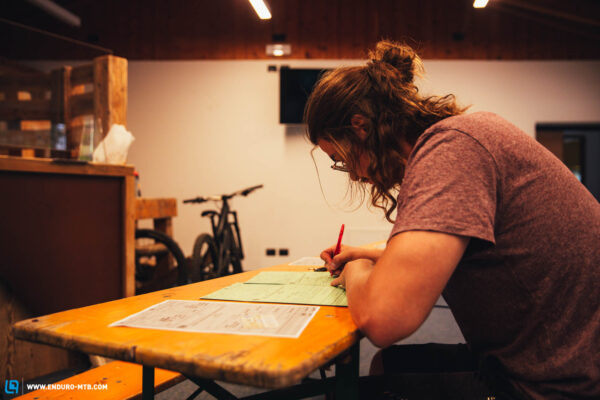
Race info
So, you arrived at the pits late on Friday evening, there was plenty of beer going around and you’re a bit hungover as you stand in front of your tent on Saturday morning, wondering where to go. If you didn’t receive any information about the race via email, the first thing you’ve got to do is get to the race registration point. It usually won’t be open all day, so don’t miss out! This is where you’ll get your race number along with further information about the day’s proceedings. For big races, you’ll also get a race guide, which is a small manual containing details about the race such as training times, stages, transfers etc.
While paperwork and manuals don’t sound like fun and you’d prefer to get riding, it’s important to familiarise yourself with the rules and all the finer details if you want to avoid any nasty surprises over the weekend. If you don’t get a pocket race guide, then look for info boards or something similar. If there’s anything you’re not sure about, never be afraid to ask competent-looking folks like us. They might not actually be competent, but it’s worth a try.
Your race strategy
Before you head into the race weekend at full throttle, you should take your foot off the gas for a moment. No race is won on the first stage and there are no prizes to be won during training. A race weekend is super exhausting, so you’ve got to pace yourself or you’ll hit the wall. To work out your strategy, study the length of the various stages. If a stage is just 2 minutes long, there’s no need to hold back here, but if a single stage spans 10 minutes, the key is to stay relaxed and not overdo it. The same applies to taking risks. You’ll have ridden most stages just once during training, if at all. So, if you spot a super sneaky high line during the race, but you can’t see the exit, it’s best to stay on the safer main line. To put it in the words of multiple EWS champion Richie Rude: “Mainline with confidence!”
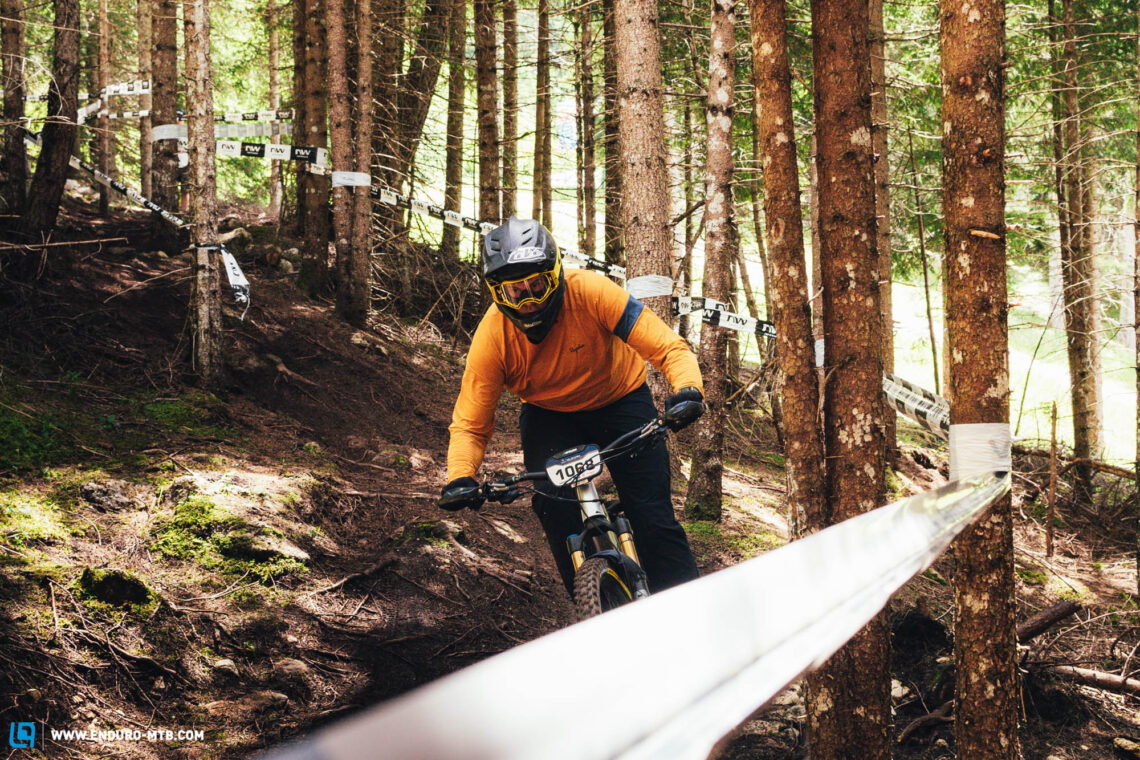
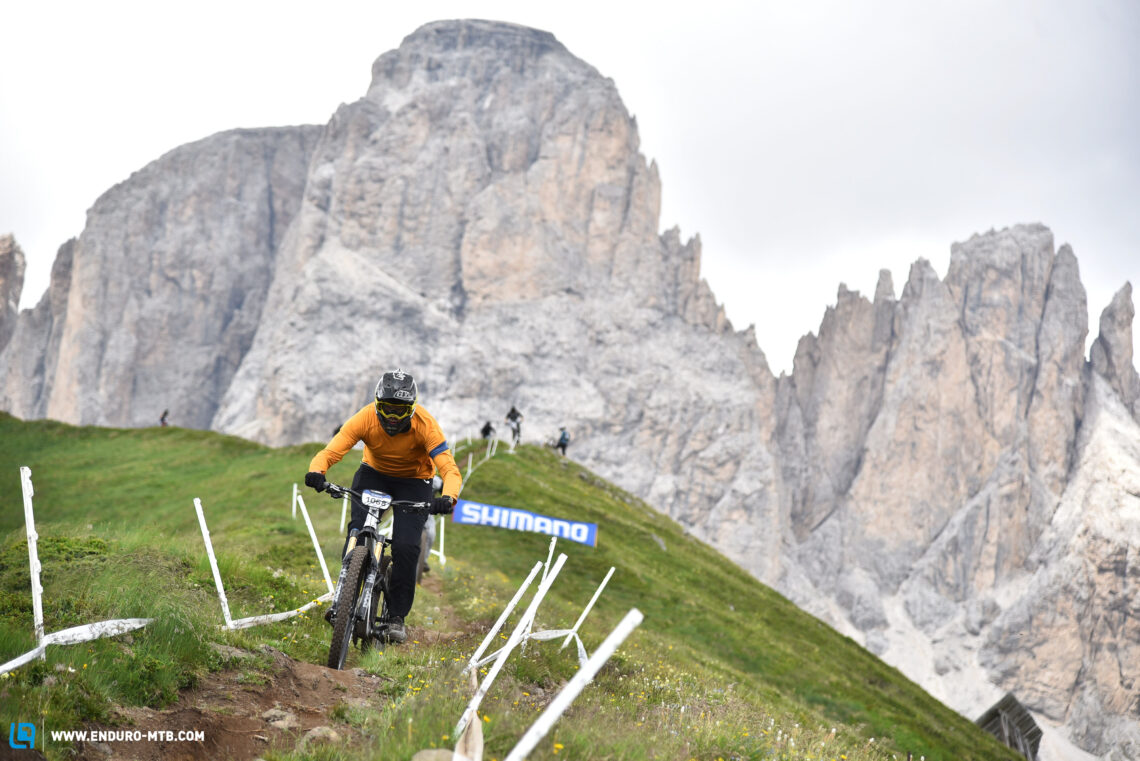
Race days can get long, so make sure you keep your body fuelled with enough food and drink. We like to use a mix of different snacks such as nuts, dates, energy bars and gels. It is also best to combine sweet and salty, so that you can replenish the electrolytes you sweat out. Of course, we can’t write about race snacks without mentioning the legendary enduro banana taped to the top tube. It is best to test how many calories you’ll need before the race because everyone’s got different energy needs and eating preferences. While some riders can get through a whole day with just two bites from an energy bar, others need a plate of pasta before each stage. In general, if you get hungry or thirsty during a race, it’s already too late. Therefore, it’s best to ingest small amounts of food and water all the time.
Most races will have supply stations. These will allow you to fill up your water bottles and top up on snacks. Special thanks at this point to the supply station at the Enduro-One race in Rossbach for the world’s best cherry pie – it comes highly recommended! But never rely entirely on finding supply stations to refuel. You may not find one when you need it, and if you do, you might find that a hungry pack of photographers have eaten all the cherry pie. As such, we recommend you refill your water bottle whenever you can! If you skip one of the watering points and run out, you can quickly find yourself with a very dry mouth and a numbing headache.

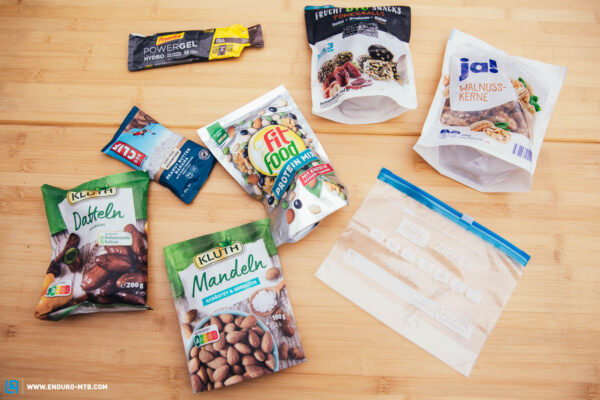
After the race
You’ve made it! You crack open a well-deserved beer and plonk yourself down somewhere in the pits. The race is over and your friends start rolling in one by one as you start to reflect on all the experiences of the weekend, reliving the highs and lows in your head. If things didn’t go well, you crashed or you simply aren’t satisfied with your performance, don’t beat yourself up about it. As long as you and your bike are still in one piece, you can call it a successful race! If you had fun with your friends, all the better. And maybe you discovered something new about yourself, new strengths or weaknesses, and made lots of new friends.
You can also have fun comparing your times at the end of the day. Who was the fastest in each stage? Which stage suited which rider? Don’t forget to rub it in your friends faces when you were quicker, and if you were slower, remind them that it’s not about the results – you were just there to have fun, right?
If you’re already planning your next race on the way home and wondering where to go next, it’s a sure sign you did everything right.
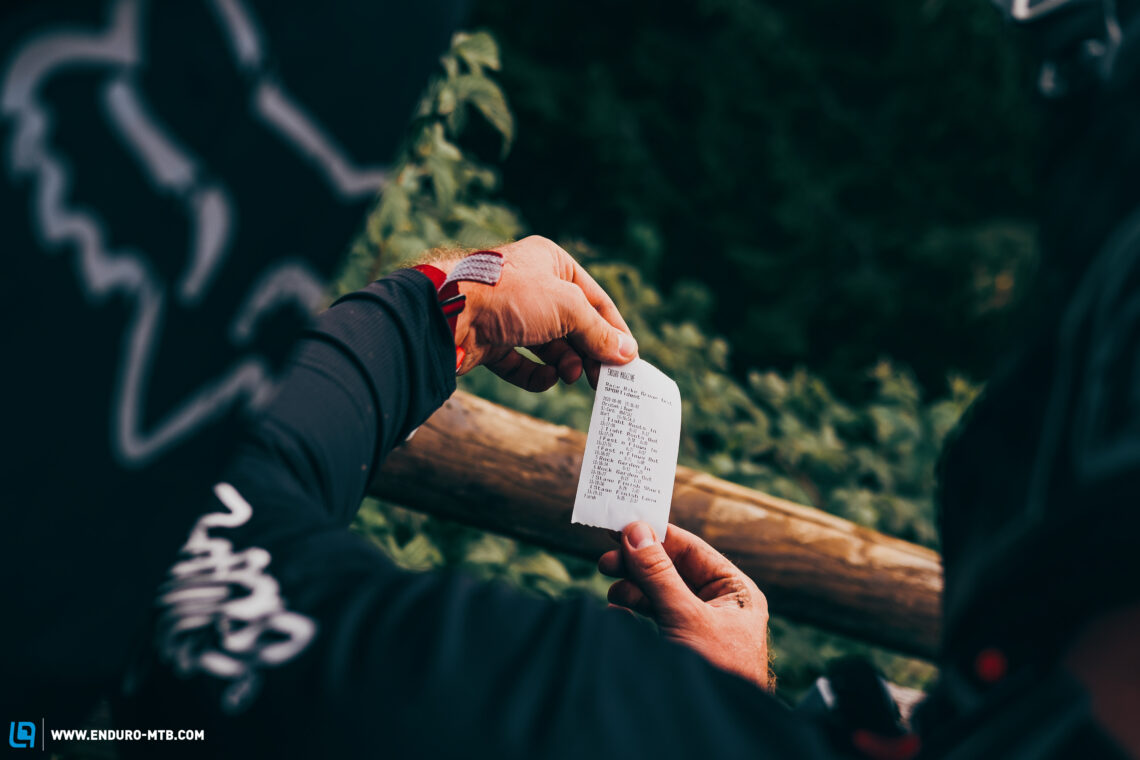
Has reading this guide has got you itching to enter your very first or next race? Yeah? Then what are you waiting for? If you’ve read this guide and heed our advice, there’s little that can go wrong. The world’s most beautiful race locations are waiting to be explored by you and your bike. So, get yourself fit, prepare your bike, gather your best riding friends and leave your comfort zone for a weekend filled with adrenaline, adventure, and fun!
